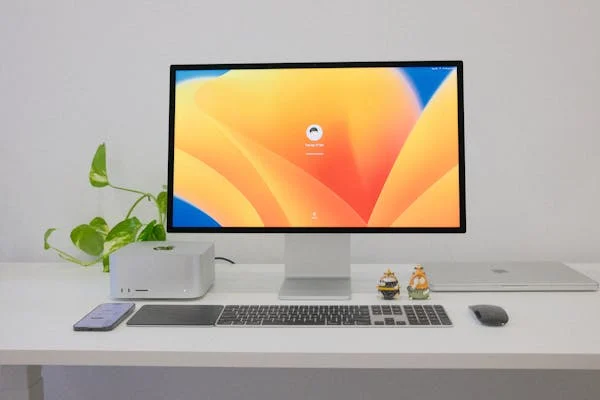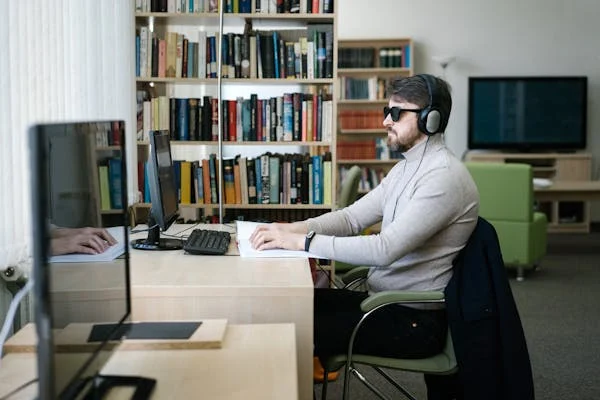
Ergonomic Accessories for Home Office Health: 7 Essential Tools for Comfort and Productivity
In today’s fast-paced world, many of us have transitioned to working from home. Whether you’re setting up a new home office or optimizing your existing workspace, it’s essential to think about more than just aesthetics. Ergonomic accessories for home office health are vital to ensuring your well-being while you work long hours at a desk. These tools can make a significant difference in your comfort, productivity, and overall health.
By incorporating the right ergonomic accessories, you can prevent strain injuries and create an environment that supports your body’s natural posture. Investing in ergonomic products not only helps you feel better but also boosts your work efficiency and mental focus, which are crucial when you’re spending most of the day at your desk.
In this article, we’ll explore how ergonomic accessories for home office health can improve your posture, prevent strain injuries, and boost your productivity. We’ll break down the must-have ergonomic tools, share practical tips, and explain why investing in ergonomic products is one of the best decisions you can make for your health and well-being.
Why Ergonomics Matter in a Home Office
When working from home, it’s easy to overlook your posture and the way your body interacts with your office equipment. Unlike traditional offices where ergonomics are often a priority, home offices can be a bit of a free-for-all. However, did you know that the wrong setup can lead to serious health issues? From back pain to carpal tunnel syndrome, poor ergonomics can cause long-term damage to your body. This is why ergonomic accessories for home office health are crucial—they ensure that your body is properly supported, reducing strain and preventing injuries that could sideline your productivity.
By adjusting your workspace with the right ergonomic accessories, you can enhance your comfort and create a more supportive and healthy work environment.
The Impact of Poor Posture on Health
We all know that slouching isn’t good for you, but the effects go beyond just looking bad. Sitting hunched over for hours puts unnecessary strain on your spine, leading to discomfort and chronic pain. The most common issues associated with poor posture are:
- Back pain: Sitting improperly without proper lumbar support can strain your lower back muscles and even damage spinal discs. This type of strain can turn into long-term pain that’s difficult to recover from.
- Neck and shoulder strain: Poor posture can tighten your neck and shoulders, leading to stiffness and pain. Without the right ergonomic adjustments, these areas of your body will begin to feel fatigued, making it hard to concentrate and work effectively.
- Eye strain: If your monitor isn’t positioned correctly, it can cause your eyes to work harder, leading to headaches, blurry vision, and dry eyes. An improper setup can also force you to squint, further aggravating eye discomfort.
Conclusion
Creating an ergonomic home office isn’t just about having the right tools—it’s about investing in your long-term health and productivity. By incorporating ergonomic accessories for home office health, such as ergonomic chairs, adjustable desks, and proper screen positioning, you can reduce discomfort, prevent strain injuries, and enhance your overall well-being. These thoughtful adjustments not only improve your posture but also boost your productivity, making your workday more enjoyable and efficient.
Remember, your workspace has a direct impact on both your physical and mental health. Don’t wait for discomfort or pain to set in—start improving your home office today and experience the lasting benefits of a healthier, more productive work environment.
FAQ Section
1. What are ergonomic accessories for a home office?
Ergonomic accessories are tools designed to improve your posture, reduce strain, and make your work environment more comfortable. Common examples include ergonomic chairs, sit-stand desks, keyboards, mice, and monitor stands.
2. How do ergonomic accessories improve health?
These accessories help maintain proper posture, reduce muscle strain, and prevent repetitive stress injuries, such as back pain or carpal tunnel syndrome.
3. Can a sit-stand desk improve productivity?
Yes! Alternating between sitting and standing can improve focus, reduce fatigue, and enhance overall productivity.
4. What is the best ergonomic chair for a home office?
Look for a chair with adjustable seat height, lumbar support, and armrests to ensure comfort and proper posture.
5. How often should I take breaks while working at a desk?
It’s recommended to take a break every 30 minutes to stretch, walk around, and change positions to avoid stiffness and discomfort.
6. Why is monitor positioning important?
Proper monitor positioning helps prevent neck strain and eye fatigue. Your monitor should be at eye level and about 20 inches from your eyes.
7. How can I improve my workspace without buying new furniture?
You can improve your workspace by adjusting your current furniture, adding accessories like footrests or keyboard supports, and making sure your screen is at the correct height.
8. Are ergonomic accessories worth the investment?
Yes, ergonomic accessories are a worthwhile investment as they help prevent long-term health issues, reduce discomfort, and boost productivity.



